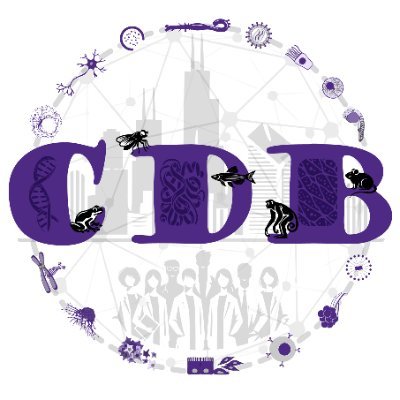
Urko del Castillo
@UrkodC
Followers
43
Following
150
Media
9
Statuses
34
Research Associate Weill Cornell Medicine Division of Hematology and Medical Oncology
Weill Cornell Medicine / NYC
Joined December 2019
Finally online in Developmental Cell! A novel variant of CLIP-170 that confers taxane resistance https://t.co/zGMEFVLp2O
1
0
3
If you want to know how dynein transports material from nurse cells to the oocyte in the Drosophila ovary, log into Motors in Quarantine Zoom meeting this coming Wednesday https://t.co/1msdm4kg82 It is not what you think it is, I promise
0
4
16
Our Department @NU_CDB is screening this great film @PictureaSciFilm, regarding equality, diversity and inclusion in science over this weekend, followed by a panel discussion on the topic on Monday. Highly recommend the film, not only to scientists, but everyone.....
Watch @PictureaSciFilm this weekend and join us for a discussion next Monday with Film Director and Producer @IanCheney #WomenInScience #diversitymatters #blackinstem
0
4
14
Ataxin-2 is essential for neurodevelopment. If you want to learn more have a look at our (@RozNorkett and @volodya_gelfand ) new prepint: https://t.co/G41KQVsfKL
0
2
4
Ataxin-2 is an essential gene in neurodevelopment. Check out the impresive work that @RozNorkett is presenting about Atx2 and its role in controlling neuronal cytoskeleton at @ASCBiology
@ASCBiology #cellbio2020 Hi everyone come and see what we are up to in the Gelfand lab. I'll be presenting our work on Ataxin2 and the cytoskeleton in neurons.
0
0
2
Awesome Work from The Gelfand Lab @volodya_gelfand and @UrkodC pushing the limits of Live Cell Imaging with the Nikon A1R #confocal and their Nikon W1 Live-SR #superresolution system! https://t.co/quX4ctv75d
@NikonInst @NU_CDB
2
16
29
Best put by our chair, @mliarispe, “change isn’t passive, it’s intentional, it requires purpose and perseverance”. CDB_NU fully supports #BLM and today we’re stepping away from science to reflect on how we can make meaningful changes to support this movement in STEM #ShutDownSTEM
0
5
14
So happy to see our work finally published in PNAS: Kinetochore protein Spindly controls microtubule polarity in Drosophila axons https://t.co/KnkU9o35wl
3
0
4
Spindly, a dynein adaptor at the kinetochore, takes on a new role in the postmitotic neuron: it's required for determination of axonal microtubule polarity by recruiting dynein to cortical actin https://t.co/mbtv4ASNri 1st preLight by @Maf_Pimentel on work from @volodya_gelfand
1
1
3
Happy Friday, everyone! We are pleased to announce that we have revamped our departmental website. A new video has been added to the homepage too. Please, have a look! https://t.co/BbNA1O5rEK
feinberg.northwestern.edu
Learn about the work and mission of the Department of Cell & Developmental Biology, located in the new Simpson Querrey Biomedical Research Center on Northwestern's downtown Chicago campus.
0
2
8
Based on our data, Spindly is responsible for recruiting dynein/dynactin complexes to F-actin in the axon. This recruitment activates microtubule transport powered by dynein. Read the paper for more details https://t.co/3gpSjtGNiK 👍
0
0
0
4) Dynein-binding domain of Spindly is required for all post-mitotic neuronal phenotypes that we screened (i.e. uniform microtubule polarity in axons, proper axonal targeting and normal locomotion)
1
0
0
3) Spindly RNAi flies displayed severe locomotion and coordination defects as well as a shortened lifespan
1
0
0
2) Depletion of Spindly in neurons causes mayor defects in axon patterning. This is clearly seen in the photoreceptor-optic lobe innervation. In Spindly RNAi photoreceptors, this pattern is completely collapsed.
1
0
0
1) Surprisingly, we identified, through a RNAi screen, that depletion of Spindly (a kinetochore protein) in Drosophila neurons disrupts the uniform polarity of axons. Note that EB1-comets move in both directions in Spindly RNAi axons.
1
0
0
One of the main differences between axons and dendrites is their microtubule organization. Microtubules in axons are uniformly oriented with their plus-ends-out. Cortical dynein is one of the factors responsible for this pattern. But how is dynein recruited to F-actin in axons?
2
0
0
A few highlights from our most recent work at @volodya_gelfand lab in collaboration with Arno Müller "Kinetochore protein Spindly controls microtubule polarity in Drosophila axons" https://t.co/3gpSjtGNiK See thread
1
0
0









